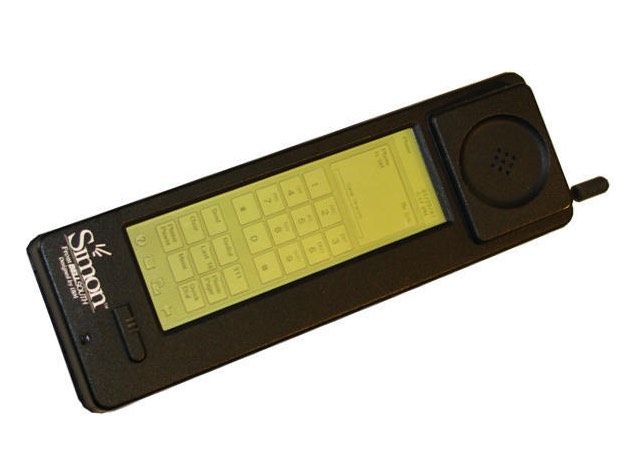- Home
- Mobiles
- Mobiles News
- World's First Smartphone 'Simon' Turns 20
World's First Smartphone 'Simon' Turns 20
By NDTV Correspondent | Updated: 16 August 2014 14:14 IST

Click Here to Add Gadgets360 As A Trusted Source

Advertisement
World's first smartphone - a $900 clunky IBM Simon mobile phone - turned 20 on Saturday.
While the term smartphone wasn't coined when IBM Simon was released, it was the first device that combined the functions of a phone and a Personal Digital Assistant (PDA), making it the first known member of the smartphone family, as we know it today.
Simon came with a black and white 4.5-inch×1.4-inch (114mm×36mm) LCD display with 293x160 pixels resolution and touch support with stylus, but had modest specs compared to modern-day smartphones. IBM Simon was powered by a x86-compatible 16-bit Vadem processor clocked at a mere 16MHz. It came with 1MB RAM, 1MB storage and ran 'Zaurus OS.'
The phone with a battery life of one hour was developed by IBM and the American cellular company BelSelf and went on sale on 16 August 1994. At around 20cm long and weighing over half a kg, it was about half the size of a house brick.
The software allowed users to write notes, draw, update their calendar and contacts and send and receive faxes - the preferred means of corporate communication before email - as well as allowing calls, of course.
"It was called Simon because it was simple and could do almost anything you wanted," the Irish Times reported.
"It has all the components of a smartphone, including a slot in the bottom to insert different applications such as mapping ones, spreadsheets and games. So it was really a forerunner to the iPhone," Charlotte Connelly from the London's Science Museum was quoted as saying.
Around 50,000 handsets were sold.
In October, the relic phone will go on display as part of a permanent exhibition on the history of communication and information technology at London's Science Museum.
Written with inputs from IANS
While the term smartphone wasn't coined when IBM Simon was released, it was the first device that combined the functions of a phone and a Personal Digital Assistant (PDA), making it the first known member of the smartphone family, as we know it today.
Simon came with a black and white 4.5-inch×1.4-inch (114mm×36mm) LCD display with 293x160 pixels resolution and touch support with stylus, but had modest specs compared to modern-day smartphones. IBM Simon was powered by a x86-compatible 16-bit Vadem processor clocked at a mere 16MHz. It came with 1MB RAM, 1MB storage and ran 'Zaurus OS.'
The phone with a battery life of one hour was developed by IBM and the American cellular company BelSelf and went on sale on 16 August 1994. At around 20cm long and weighing over half a kg, it was about half the size of a house brick.
The software allowed users to write notes, draw, update their calendar and contacts and send and receive faxes - the preferred means of corporate communication before email - as well as allowing calls, of course.
"It was called Simon because it was simple and could do almost anything you wanted," the Irish Times reported.
"It has all the components of a smartphone, including a slot in the bottom to insert different applications such as mapping ones, spreadsheets and games. So it was really a forerunner to the iPhone," Charlotte Connelly from the London's Science Museum was quoted as saying.
Around 50,000 handsets were sold.
In October, the relic phone will go on display as part of a permanent exhibition on the history of communication and information technology at London's Science Museum.
Written with inputs from IANS
Comments
Catch the latest from the Consumer Electronics Show on Gadgets 360, at our CES 2026 hub.
Related Stories
Popular on Gadgets
- Samsung Galaxy Unpacked 2025
- ChatGPT
- Redmi Note 14 Pro+
- iPhone 16
- Apple Vision Pro
- Oneplus 12
- OnePlus Nord CE 3 Lite 5G
- iPhone 13
- Xiaomi 14 Pro
- Oppo Find N3
- Tecno Spark Go (2023)
- Realme V30
- Best Phones Under 25000
- Samsung Galaxy S24 Series
- Cryptocurrency
- iQoo 12
- Samsung Galaxy S24 Ultra
- Giottus
- Samsung Galaxy Z Flip 5
- Apple 'Scary Fast'
- Housefull 5
- GoPro Hero 12 Black Review
- Invincible Season 2
- JioGlass
- HD Ready TV
- Laptop Under 50000
- Smartwatch Under 10000
- Latest Mobile Phones
- Compare Phones
Latest Gadgets
- OPPO Reno 15 Pro Max
- Honor Win RT
- Honor Win
- Xiaomi 17 Ultra Leica Edition
- Xiaomi 17 Ultra
- Huawei Nova 15
- Huawei Nova 15 Pro
- Huawei Nova 15 Ultra
- Asus ProArt P16
- MacBook Pro 14-inch (M5, 2025)
- OPPO Pad Air 5
- Huawei MatePad 11.5 (2026)
- Xiaomi Watch 5
- Huawei Watch 10th Anniversary Edition
- Acerpure Nitro Z Series 100-inch QLED TV
- Samsung 43 Inch LED Ultra HD (4K) Smart TV (UA43UE81AFULXL)
- Asus ROG Ally
- Nintendo Switch Lite
- Haier 1.6 Ton 5 Star Inverter Split AC (HSU19G-MZAID5BN-INV)
- Haier 1.6 Ton 5 Star Inverter Split AC (HSU19G-MZAIM5BN-INV)
© Copyright Red Pixels Ventures Limited 2026. All rights reserved.
















